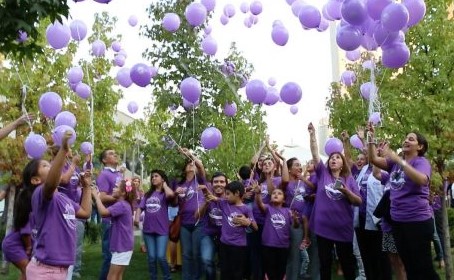Every year on March 26 is a Purple Day - an international event that aims to raise awareness of epilepsy and debunk common myths and fears about this neurological disorder.
It is believed that Violet (lavender) color - the symbol of the Day - has a beneficial effect on the nervous system, reduces anxiety, phobias and fears. Therefore, on March 26, organizers and participants of events dedicated to this day pin purple ribbons or wear purple items of clothing expressing their support for people with epilepsy.
Epilepsy is one of the most common chronic psychoneurological diseases that causes seizures of varying intensity. Seizures can range from minor memory loss or muscle spasms to severe, prolonged convulsions. The World Health Organization (WHO) estimates that more than 50 million people worldwide (approximately 0.5-1% of the general population) have epilepsy. According to some studies, this number already exceeds 70 million people. WHO experts believe that adequately selected therapy can achieve complete absence of attacks in approximately 70% of patients. It is the achievement of remission, or the absence of seizures for at least 12 months that improves the quality of life of people with epilepsy. Timely initiation, as well as the correct dosage and choice of drug determine the success of treatment and increase a person’s chances of living without attacks.
The story of a girl with epilepsy
Our colleague met with a girl suffering from epilepsy, whose stories about her struggle with the disease and daily difficulties in life showed inner strength, courage and the ability not to lose heart in the face of a terrible disease.
“My name is Anna (name changed upon request), I am 25 years old, and every day is a struggle for me” the interlocutor began her story. “My frequent attacks make my life unbearable. Every time I feel an epileptic attack coming on, I fear that this could be my last day”.
Anna's story is far from the perfect life that many people dream of. The illness forces her to stay home most of the time, avoiding vigorous activities and puts even the most mundane moments of her life at risk. “I can’t work because of frequent attacks. Not many people are ready to be with me because I can lose consciousness at any moment,” Anna admitted.
Despite all the difficulties, Anna does not lose hope. She regularly undergoes examinations and treatment in the hospital, hoping for improvement. “My goal is not to let the disease destroy me. I believe that in future there will be treatments that will help me return to a full life. It was undoubtedly important for me to find support in my environment - close friends and family are always with me on my way to recovery,” Anna shared.
Anna's story shows that even in the most difficult circumstances it is important to maintain hope and strive for the best. Her battle with epilepsy is a fight for life, it is about resilience and understanding that every day is a gift to be treasured.
We hope her story will inspire others facing similar challenges not to lose faith in themselves and their strengths. It is important to remember that each person is unique and capable of overcoming any obstacles if he does not lose hope and has the support of loved ones.
Interviewed by Natalya Shekh
















